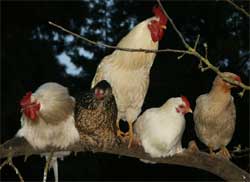 The Environmental Working Group (EWG) is an organization that has been at the forefront of helping protect public health and the environment. Part of their focus is to help parents protect their kids from environmental toxins, contaminants and other nasties, and to provide information and resources so that parents can make healthier choices for their little ones. Their pages for parents include tips, resources, research reports, calculators and other useful tools, and EWG also works to promote legislation (such as the Kid-Safe Chemicals Act) and to encourage citizen activism (such as insisting that the EPA reduce Americans’ exposure to rocket fuel in their water). I find them to be a valuable resource, and I often refer people to their cosmetics safety database.
The Environmental Working Group (EWG) is an organization that has been at the forefront of helping protect public health and the environment. Part of their focus is to help parents protect their kids from environmental toxins, contaminants and other nasties, and to provide information and resources so that parents can make healthier choices for their little ones. Their pages for parents include tips, resources, research reports, calculators and other useful tools, and EWG also works to promote legislation (such as the Kid-Safe Chemicals Act) and to encourage citizen activism (such as insisting that the EPA reduce Americans’ exposure to rocket fuel in their water). I find them to be a valuable resource, and I often refer people to their cosmetics safety database.
Recently they’ve come out with a 1-sheet “Healthy Home Tips for Parents,” (PDF) a downloadable guide to “the most important steps you can take at home to promote your family’s environmental health.”
The list includes suggestions such as:
- Choose better body care products.
- Go organic & eat fresh foods.
- Pick plastics carefully.
- Use greener cleaners & avoid pesticides.
And you can sign up for their e-newsletter to receive more detailed tips about each item on the list.
I’m glad that EWG is promoting the positive steps for parents that they are, and they have some great suggestions, but I’m saddened and disappointed that they’re not going further. I know that change can be scary and inconvenient and confusing for some people, but when we’re talking about our children’s health and the health of our planet, I would think that EWG would offer larger measures, too. For example, in their tips, they suggest that parents “choose milk and meat without added growth hormones.” How about suggesting to parents that they not feed animals and their products to kids at all? Awareness about the environmental and health impacts of eating animals only continues to grow and evidence of the benefits of choosing a plant-based diet rather than eating animal foods only continues to strengthen.
One of their tips is to “Eat good fats.” Instead of recommending plant-based sources for omega-3 fatty acids, such as walnuts, flax seeds or flax seed oil, or certain types of seaweeds, (although they do mention that you can get omega-3s from “nuts, oils and produce”), they recommend choosing “low-mercury fish.” Low-mercury still has mercury in it.
They recommend using a HEPA-filter vacuum, but don’t suggest preventative strategies such as getting rid of carpets, which can be full of toxins and hold in all kinds of pollutants and allergens. They suggest that parents choose “snug-fitting cotton pajamas” for their kids, but don’t mention the enormous environmental impact of cotton production (such as the pesticide and water use). How about suggesting an alternative for parents such as shopping at thrift stores, so that they can find used pajamas for less cost and less environmental impact?
I realize that they’ll be providing more in-depth suggestions regarding each tip in their e-newsletters, but since many parents may only look at the single sheet tips, it’s important to include such essential information there.
EWG does some very valuable and credible work, and I’m glad they’re providing such important information to parents. I just wish that they – and many of the other non-profit groups working to make the world a better place – wouldn’t stop shy of suggesting broader and deeper actions that parents and citizens can take. Let’s offer parents and citizens a range of suggestions that shows them the ideal choices, as well as some easier stepping stones, so that they can make the best and most informed choices based on their current circumstances and willingness to enact change.
~ Marsha
Filed under: environmental preservation, health and fitness, humane parenting, MOGO choices, third side thinking, websites | Tagged: children, children's health, environmental health, environmental protection, Environmental Working Group, health issues, humane parenting, MOGO choices, nonprofit organizations, toxins | 3 Comments »


 Recently the United Nations Environment Program
Recently the United Nations Environment Program 
 The
The  What’s it like for animals raised in factory farms, and how does that compare to their natural lives?
What’s it like for animals raised in factory farms, and how does that compare to their natural lives?  Today, May 4 is
Today, May 4 is